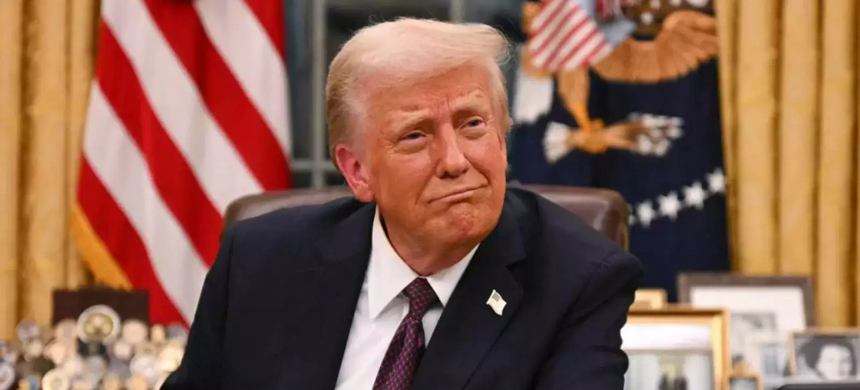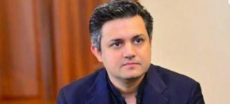The latest round of U.S. trade tariffs, introduced on Wednesday, is expected to further weaken the global economy, which is still recovering from post-pandemic inflation while grappling with record-high debt and geopolitical tensions.
The way President Donald Trump and other world leaders respond to these tariffs could mark a significant shift in the global economic landscape. Until now, the stability and reliability of the United States as a key player in international trade had been largely unquestioned.
Takahide Kiuchi, an executive economist at Nomura Research Institute, warned that Trump’s tariffs could dismantle the global free trade system that the U.S. had championed since World War II. However, in the short term, the immediate concern is the impact of rising costs, which will likely suppress demand as tariffs increase on thousands of consumer and business products worldwide.
Read More: China warns Europe of the risk of a trade war ahead of talks with Germany
Antonio Fatas, a macroeconomist at INSEAD business school in France, expressed concerns that these measures could lead to economic downturns, increasing uncertainty and possibly pushing the world toward a global recession.
While addressing the media at the White House Rose Garden, Trump announced a baseline 10% tariff on all imports, along with higher rates on major trading partners—34% on China and 20% on the European Union. A 25% tariff on automobiles and auto parts had already been confirmed earlier. Trump argued that these tariffs would help restore critical manufacturing industries within the United States.
As a result of the new levies, the overall U.S. tariff rate on imports has surged to 22%—a level not seen since 1910—up from just 2.5% in 2024, according to Olu Sonola, head of U.S. economic research at Fitch Ratings. He described the move as a game-changer, predicting that it could push multiple countries into recession.
Meanwhile, IMF Managing Director Kristalina Georgieva stated at a Reuters event that, for now, she does not foresee a global recession. However, she acknowledged that the IMF is likely to make a slight downward revision to its 2025 global growth forecast of 3.3%.
The impact of these tariffs will vary significantly across countries, with rates ranging from 10% on British imports to 49% on goods from Cambodia. If these tariffs trigger a broader trade war, it could have severe consequences for countries like China, which may struggle to find alternative markets amid sluggish domestic demand.
Marcel Thieliant, head of Asia-Pacific at Capital Economics, noted that Asian economies would be particularly vulnerable since they not only face higher tariffs than most regions but also rely heavily on U.S. demand for their goods.
If the U.S. itself slides into recession, developing countries closely linked to its economy will likely experience substantial setbacks. Markets reacted negatively, with stocks plunging and investors flocking to safer assets such as bonds, gold, and the yen on Thursday.
A Changing Global Trade Order
The new tariffs could also have major implications for central banks and government policies.
For years, global supply chains have helped keep consumer prices in check. However, disruptions caused by these trade restrictions could lead to sustained inflation above the 2% level, which many central banks consider manageable.
The Bank of Japan, for example, might face pressure to raise interest rates to counter inflation, just as other major central banks consider cutting rates. Additionally, Japan’s export sector could suffer from increased U.S. tariffs.
In response, some countries are exploring strategies to counter the economic damage or negotiate exemptions from Washington. Japan and South Korea—both of which face steep tariffs of 24% and 25%, respectively—have announced emergency measures to support affected businesses.
Despite being close U.S. allies, both nations were among those Trump accused of unfair trade practices. Japan’s trade minister suggested that the tariffs may violate World Trade Organization (WTO) rules but stated only that Tokyo would consider various options in response. Kiuchi from Nomura noted that Japan’s strong security ties with the U.S. limit its ability to negotiate favorable terms.
Australia’s prime minister criticized the tariffs as unfriendly but ruled out imposing retaliatory measures.
Debt and Economic Pressures
A weaker global economy could make it even harder for governments to manage the world’s record $318 trillion debt. At the same time, nations may struggle to allocate funds for essential priorities such as defense, climate initiatives, and social welfare.
There are also concerns about whether the tariffs will succeed in encouraging private investment in U.S. manufacturing. With the country already experiencing labor shortages and near-full employment, it remains uncertain whether businesses will expand domestic production as intended.
If the tariffs fail to reduce the U.S. trade deficit—a long-standing concern for Trump—he may turn to other strategies, such as pushing for currency adjustments that favor American exports.
Freya Beamish, chief economist at TS Lombard, suggested that Trump might take more aggressive measures to weaken the U.S. dollar to address trade imbalances. Such moves could put the dollar’s dominant position as the world’s reserve currency at risk, although no viable alternatives currently exist.
Meanwhile, European Central Bank President Christine Lagarde emphasized the need for Europe to accelerate economic reforms in response to what she described as an “inverted world.” She pointed out that the post-Cold War era of low inflation and expanding trade, driven by U.S.-led globalization, is shifting toward fragmentation and economic uncertainty.
“Everyone benefited from a hegemon—the United States—that was committed to a multilateral, rules-based order,” she said. “Today, we must contend with closure, fragmentation, and uncertainty.”










